Discovering Guyana (Part 2): Getting to Know Georgetown on a City Tour
by Karen Rollins Nov 14, 2022
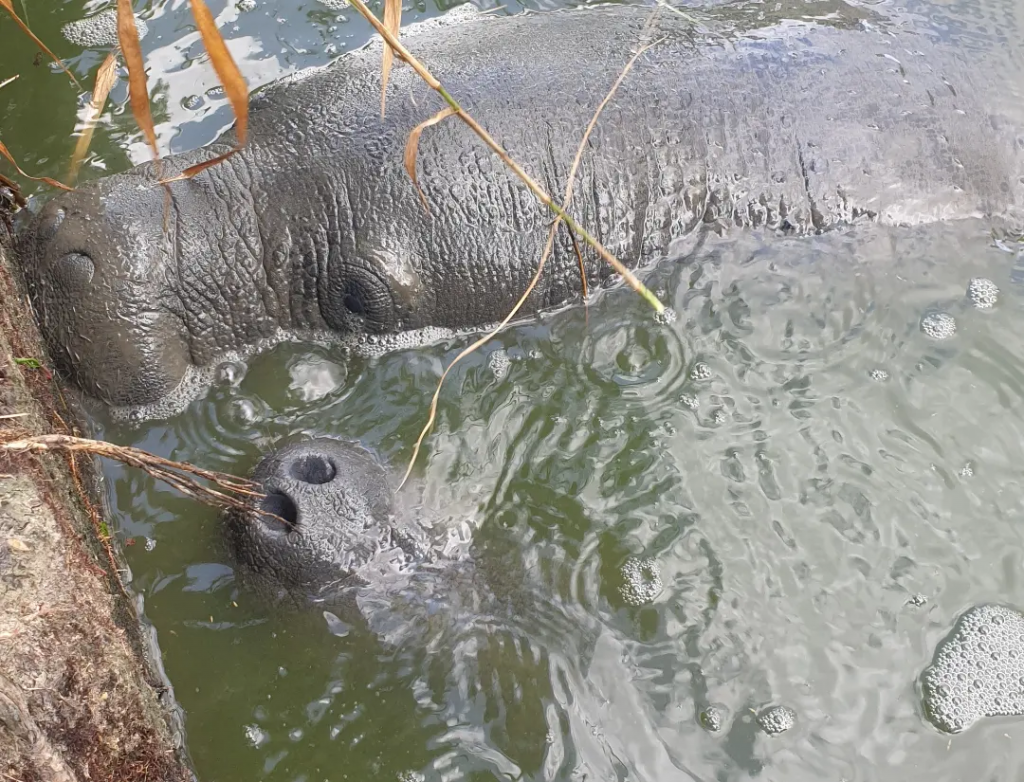
On my second day in Guyana, we toured the capital city of Georgetown, and I felt strangely at home.
I come from west London, so several street names rattled off by our knowledgeable guide Jamal as we began our explorations were more than familiar to me.
Guyana’s Regent Street has lots of shops and bustling activity much like its namesake in the heart of London’s West End. Georgetown’s Waterloo Street recognises Admiral Wellington’s victory over the French in 1815 as does London’s Waterloo Bridge. Charlotte Street and King Street need no further explanation.
Georgetown itself was formally called Stabroek when the Dutch were in control but under British rule was renamed in honour of King George IV.
Dutch and British influences throughout Guyana’s capital are not just evident in its street names, but also in its architecture and statues, even the way it is laid out with several drainage canals and sluice gates installed by the colonists to cope with regular flooding.
We began our city tour at Georgetown’s National Park which was formerly named Queen Elizabeth II National Park before Guyana gained independence.
This 57-acre site is a popular area of greenery where people come to exercise, picnic, fly kites, and relax.
The park is also home to a group of wild manatees (aka sea cows) which live in a large pond situated in the north of the site.
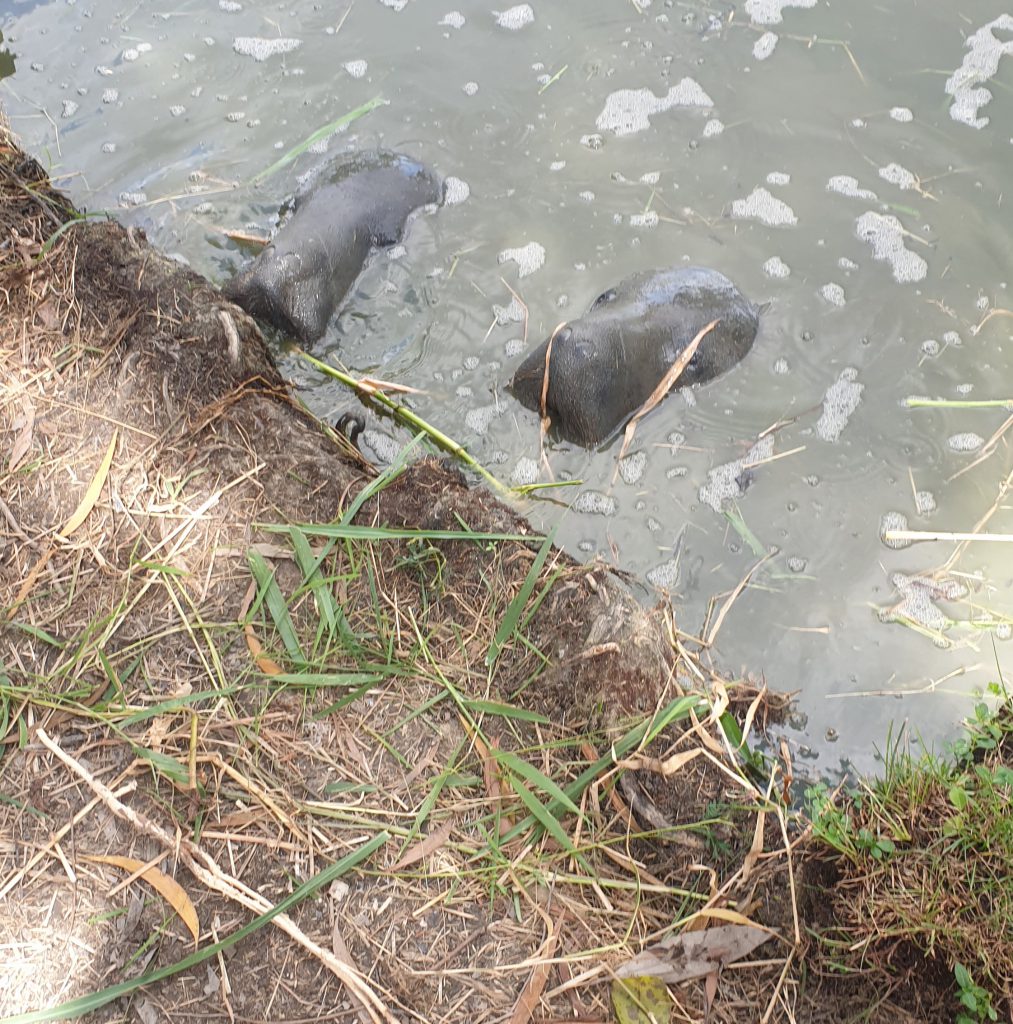
Jamal pulled up some grass at the park’s entrance, and we walked to the pond where around eight manatees were hanging out, like they just were waiting for our arrival. Jamal rippled the water with the fresh stalks, and the group took the cue to come over and eat, while we marvelled at their size and gentle nature and took countless photos and videos.
I can easily say that this was the best way to start the day!
On leaving the park, we walked past a 20-foot ‘Wakili’ totem pole carved out of purpleheart by Lokono artist, Oswald Hussein. This traditional monument erected in 2015 tells the story of the close relationship between man and nature since the dawn of time and the need to take care of the environment.
It was a fitting reminder of why green areas like the National Park are so important.
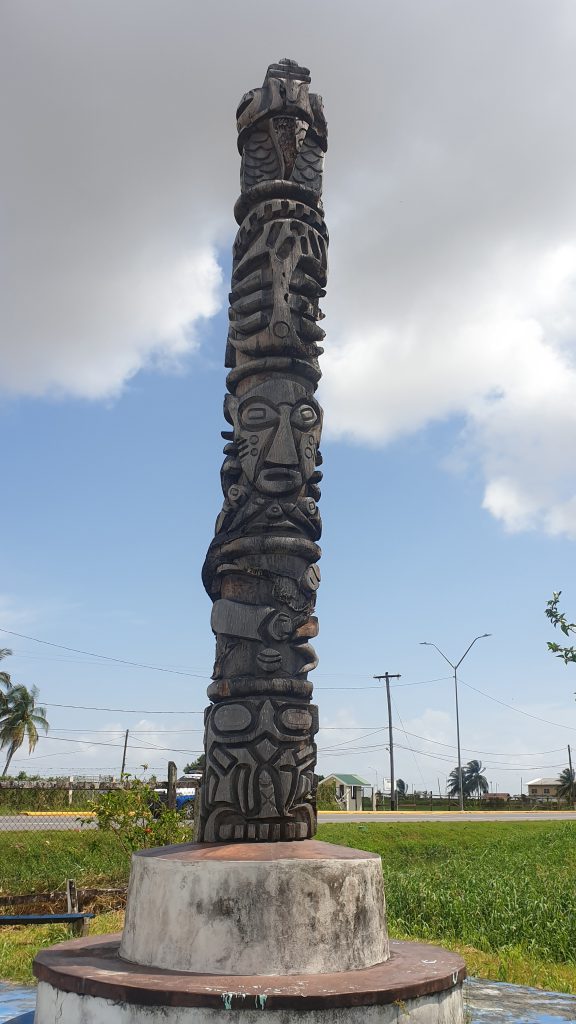
Our next destination was another of Georgetown’s most visited sights – the sea wall.
This 280-metre-long structure was built during the 1880s by the Dutch as part of the constant fight to keep the Atlantic Ocean at bay. Since then, it has been fortified and expanded and remains Georgetown’s best defence against completely disappearing under water.
The wall provides expansive views of the Atlantic and is a place where people gather for events especially on the weekends and public holidays.
It is also a major tourist attraction and there are ambitious plans to enhance the sea wall as part of Guyana’s ‘National Beautification Project’ which includes restoring the bandstand to its former pristine state, adding food kiosks, regulating vending, and improving security.
Click to read: Discovering Guyana (Part 1) – A River Tour in the ‘Land of Many Waters’
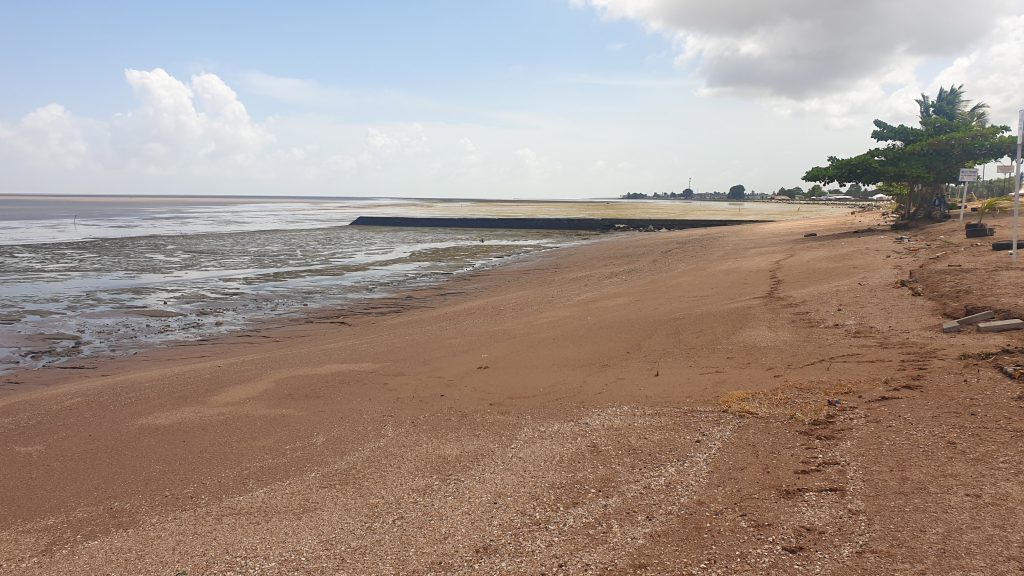
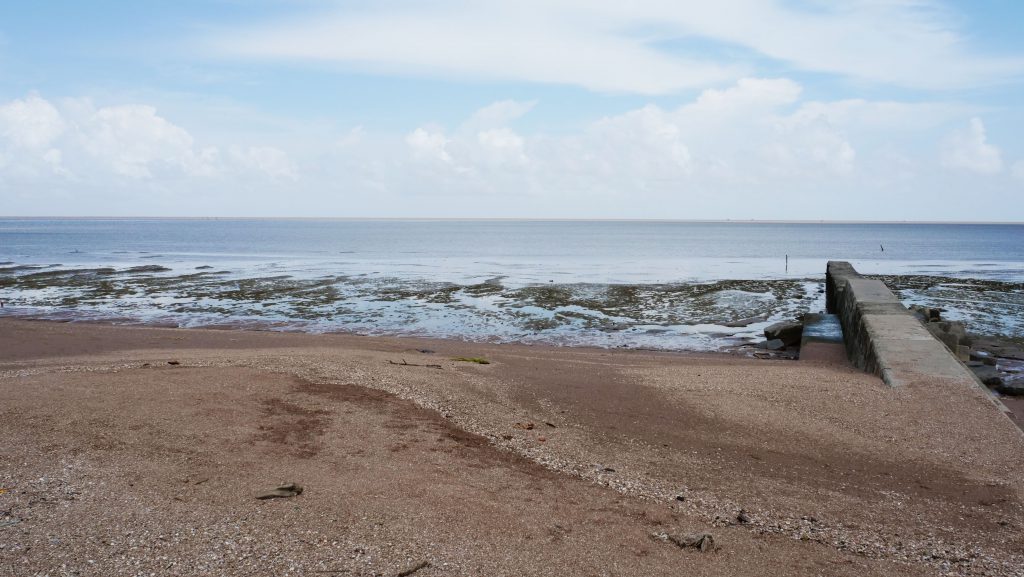
After taking in the fresh sea air, we took obligatory photos at the ‘I love Guyana’ sign and came to one of the most distinctive buildings in Georgetown, a traditional Amerindian benab hut or ‘Umana Yana’ which means “meeting place”.
Originally erected in 1972, this conical palm thatched building with a 77-foot-tall roof was initially built over 80 days by 60 Wai Wai men led by Chief Elka.
The hut has since been reconstructed and refurbished three times, with the latest work completed in 2016 by 35 Wai Wai Indians from South Rupununi, supervised by Chief Elka’s nephew Toshao Paul Chekema.
‘Umana Yana’ is quite a striking and unusual site in modern-day Georgetown, surrounded by towering glass and concrete buildings.
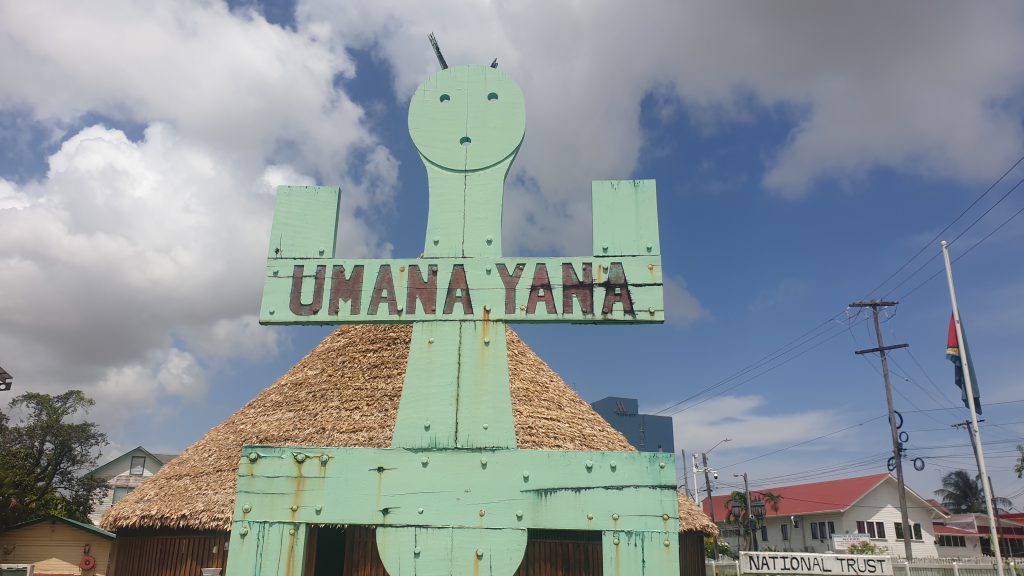
Our next stop was the Cheddi Jagan Research Centre which is housed in another eye-catching building – the aptly named Red House.
This depository for information, photographs, videos, and other material items related to two former Presidents of Guyana, Dr Cheddi Jagan and his American-born wife Janet, provides invaluable insight into the key role they played in the political, social, and economic development of the country.
Visitors can expect to learn all about Dr Jagan’s childhood as the son of indentured plantation workers and his subsequent rise through the political ranks to Guyana’s highest office. Details on how Dr Jagan met his wife Janet are also on display along with a photo from their wedding in 1943 and snapshots of them in public and private settings and with their two children.
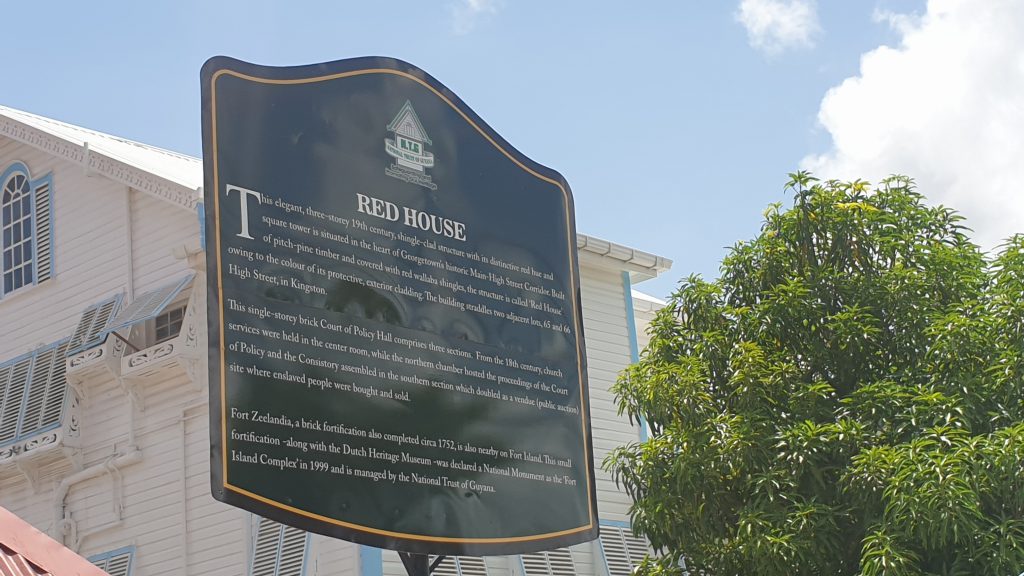
While walking through the house that Dr Jagan and his wife called home when he was Premier from 1961-1964 and seeing the countless awards and gifts that they both received from governments and organisations all over the world, it is impossible not to be impressed by this power couple who dedicated almost all their lives to the advancement of Guyana.
Driving on through the town, we passed several important and impressive architectural buildings including Georgetown City Hall, the Parliament Building, the Prime Minister’s home and President’s House (State House).
Our guide Jamal also told us an amusing story about the marble statue of Queen Victoria which stands in front of Guyana’s High Court and was commissioned in 1887 to mark her Golden Jubilee.
The statue stood untouched from 1894 until the 1950s when it was dynamited by anti-colonial protestors and suffered significant damage. It was partially repaired and then removed to a less prominent position.
When Queen Elizabeth II visited the country in February 1966, the statue was returned to its original spot, and as she was driven past the crowds on the opposite side of the road were encouraged to cheer as loudly as possible so she would turn and look at them and not notice that the statute of her grandmother was missing an arm and a nose!
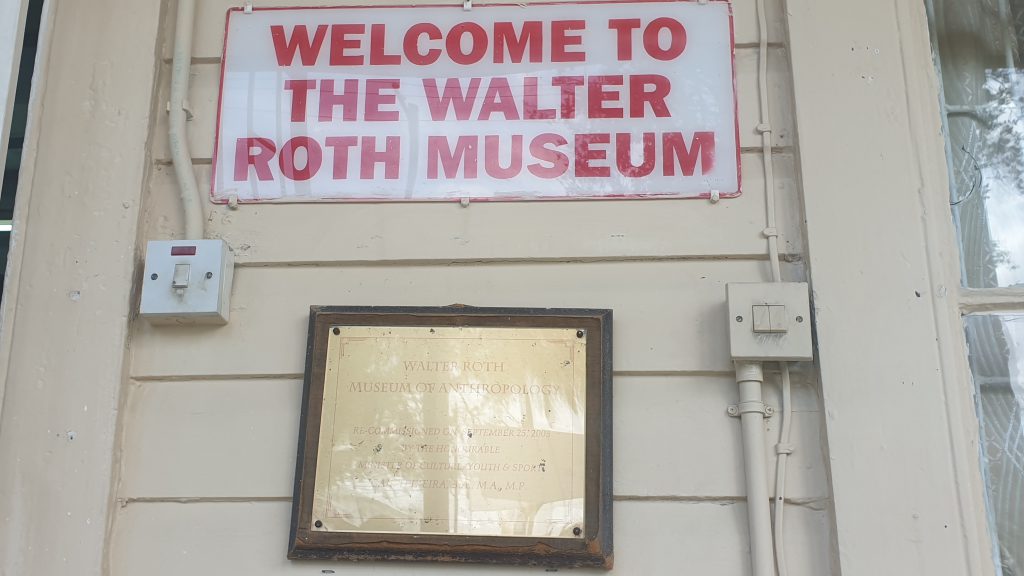
Continuing along Main Street we popped into the Walter Roth Museum of Anthropology which claims to be the first and oldest museum of anthropology in the English-speaking Caribbean.
The museum has just two floors and is quite small but contains enough artefacts and unusual items about the nine Indigenous Peoples of Guyana (the Akawaios, Arawaks, Arecunas, Caribs, Makushis, Patamonas, Warraus, Wapishanas and Wai-Wai’s) to keep your interest for an hour or so.
Heading to Guyana’s National Museum, we made a quick pit stop at St George’s Cathedral, which oddly sits in the middle of a busy roundabout. The church dates from 1889 and is known as the highest wooden building in the western hemisphere, standing at 143 feet tall.
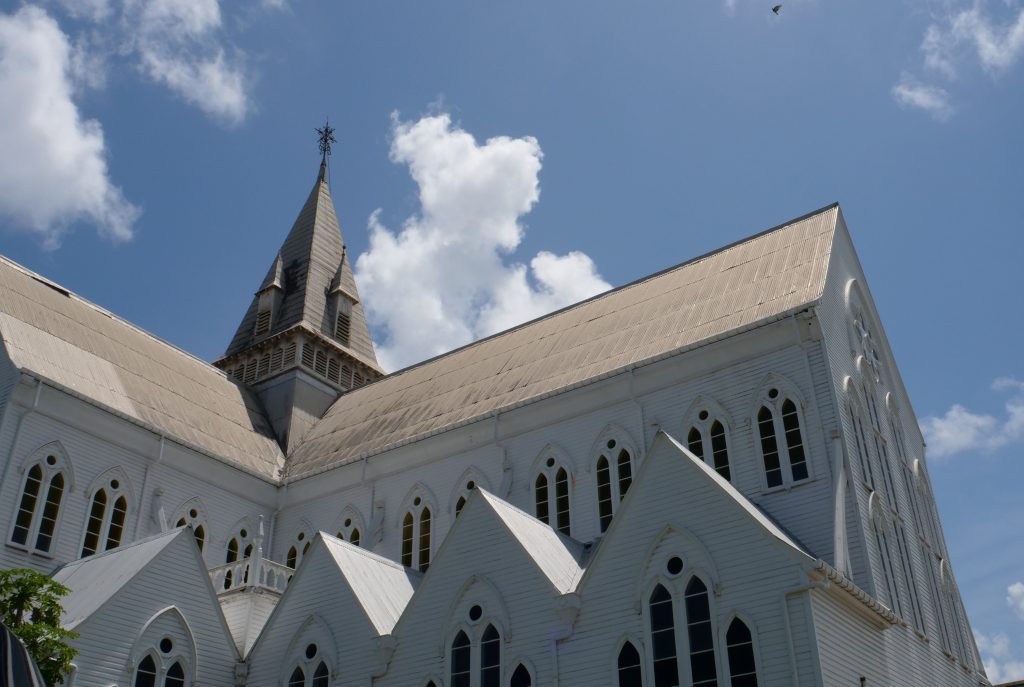
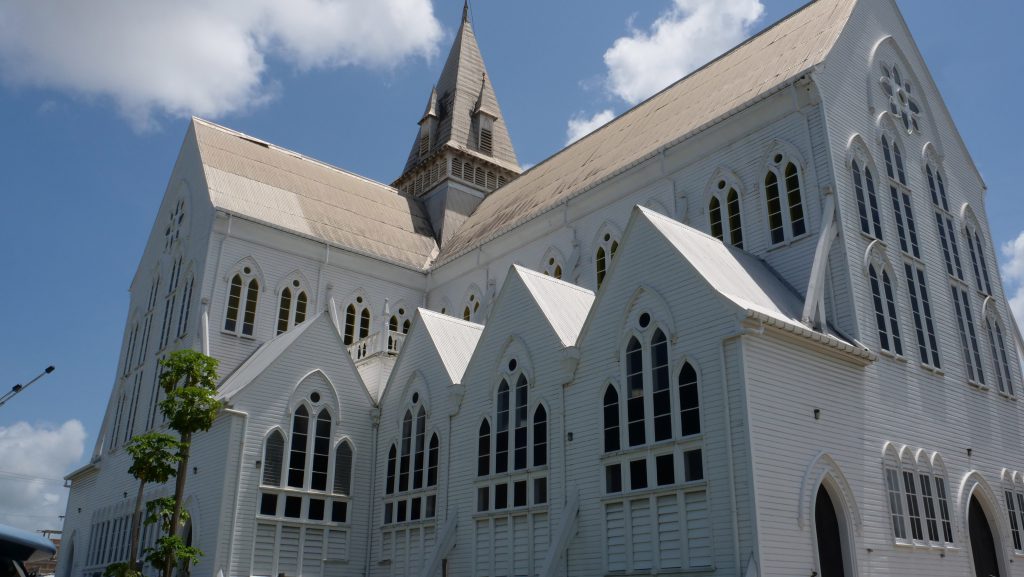
Unfortunately, the cathedral was closed when we visited, but the detailing on the outside is undoubtedly majestic and grand and extremely photogenic. I could not stop admiring the gothic arches and stained-glass windows which have been lovingly restored while the rest of the building is still being repaired.
Before entering Guyana’s National Museum, we also took the chance to look for souvenirs at a local market situated opposite the building. Many Amerindian people are highly skilled in basket weaving, hammock making, and leather work so there were plenty of items to choose from, and the artisans were more than pleased to discuss their work and get a sale!
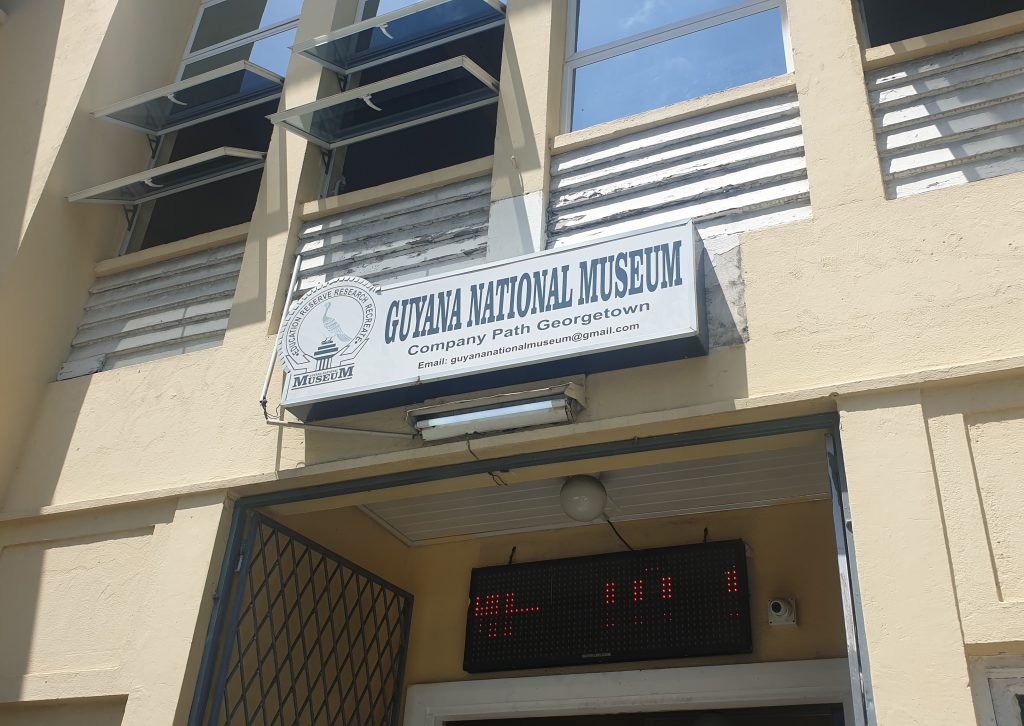
Guyana’s National Museum has a somewhat meek and shabby exterior so you could probably easily walk by it on the street and not even know it’s there, but if you did that, you’d be missing out, because this museum (established in 1868) holds quite a large treasure trove of facts and insights.
The displays are extensive and varied and range from the well-preserved remains of indigenous animals to an interactive map of the country showing the location of gold and diamond mines, Kaieteur Falls, and river borders.
The most fascinating exhibit on show is without doubt a life-sized replica of a Megatherium Giant Sloth made from bones found by local miners at Oko Creek in 1999.
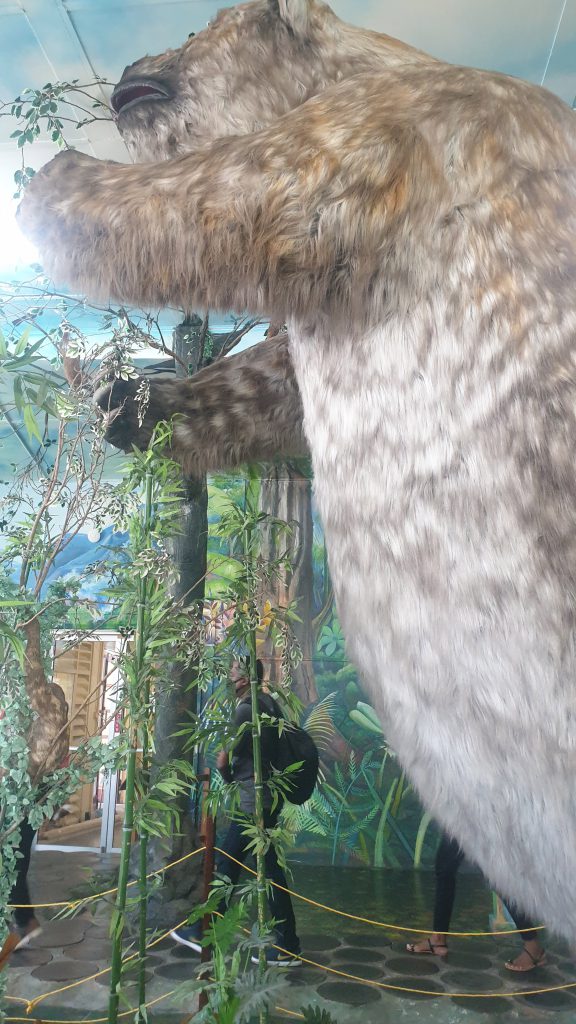
When I first saw it, I thought it was a Yeti (aka the abominable snowman), but this giant animal was apparently real and is believed have been one of the largest mammals walking the earth during the Ice Age.
We left the museum with a lot more knowledge and understanding of Guyana.
It was time for lunch at a streetside restaurant where I tried curried duck for the first time accompanied by a roti skin, callaloo, and a glass of sorrel.
After our meal we made our way to Stabroek Market – a cornucopia of activity and stimulation for all the senses.
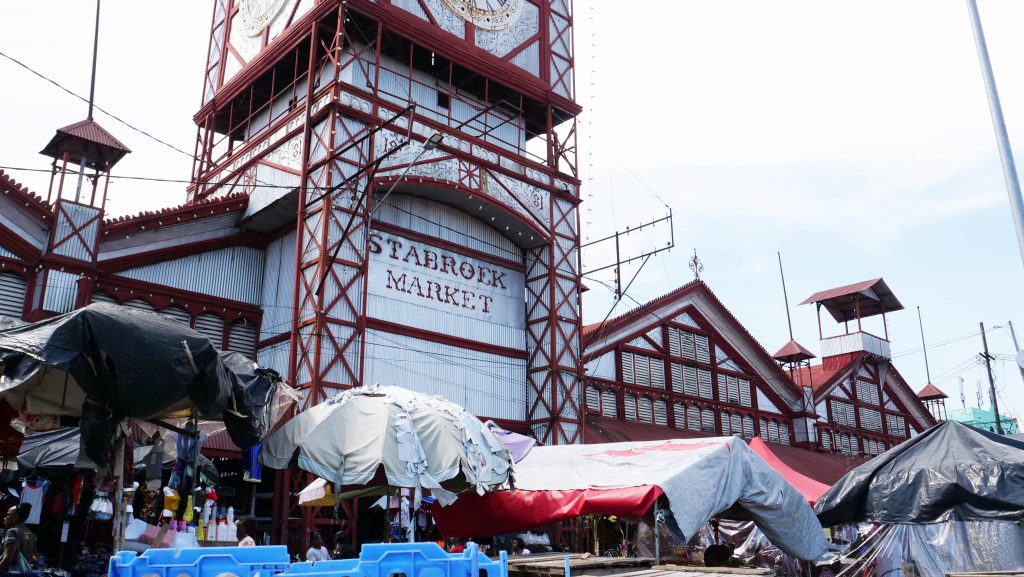
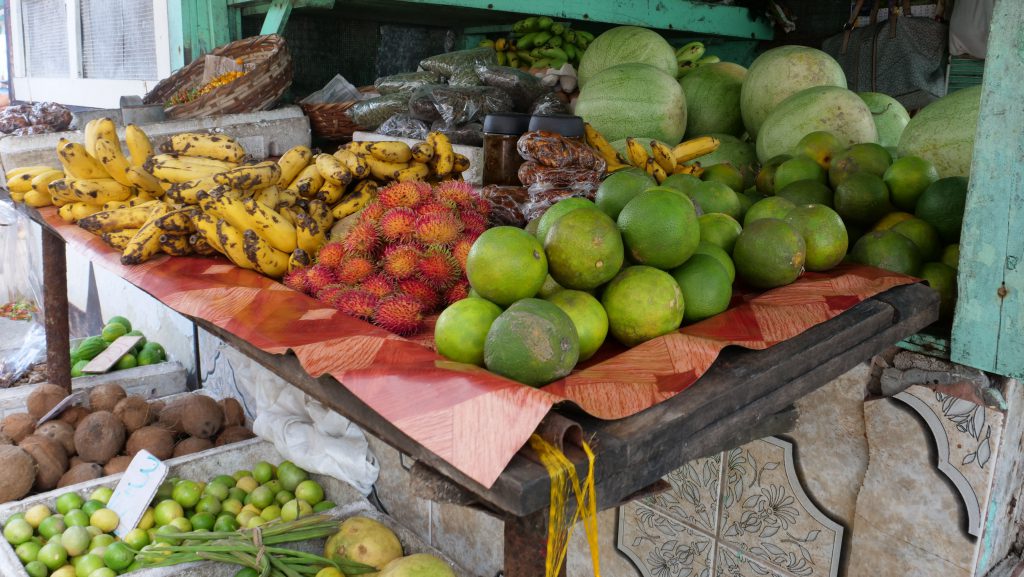
My mind struggled to take in all that I was seeing, as Jamal expertly weaved us through different sections of the marketplace, past vendors who literally sell everything you could possibly want or need. There were clothes, spices, fruits, and even fresh fish on display.
I could have easily spent all day at Stabroek Market, but time was catching up to us, so we made a brief stop at the 1763 emancipation monument built to honour enslaved African and freedom fighter ‘Cuffy’, before our last stop on the city tour, the National Botanical Gardens.
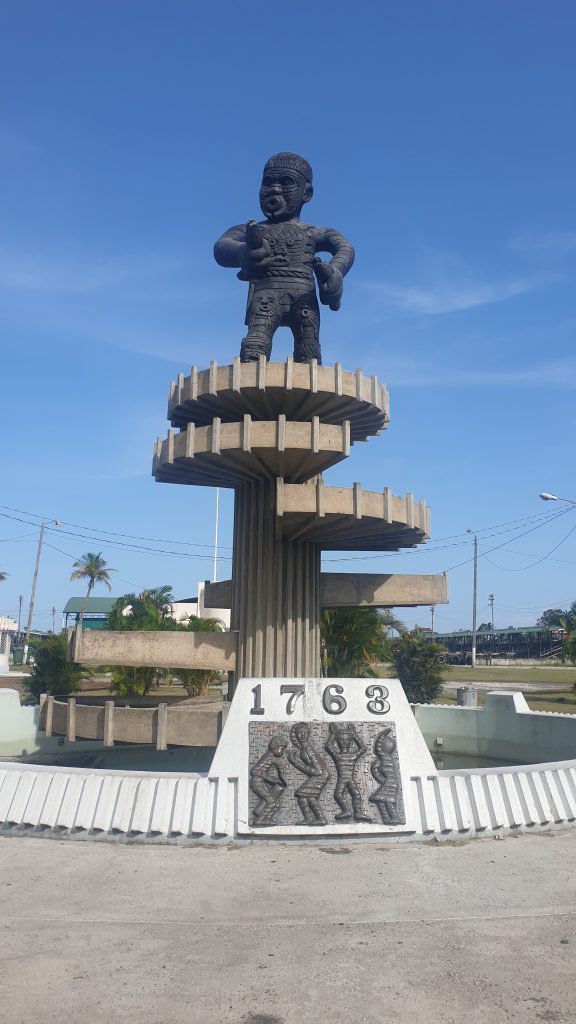
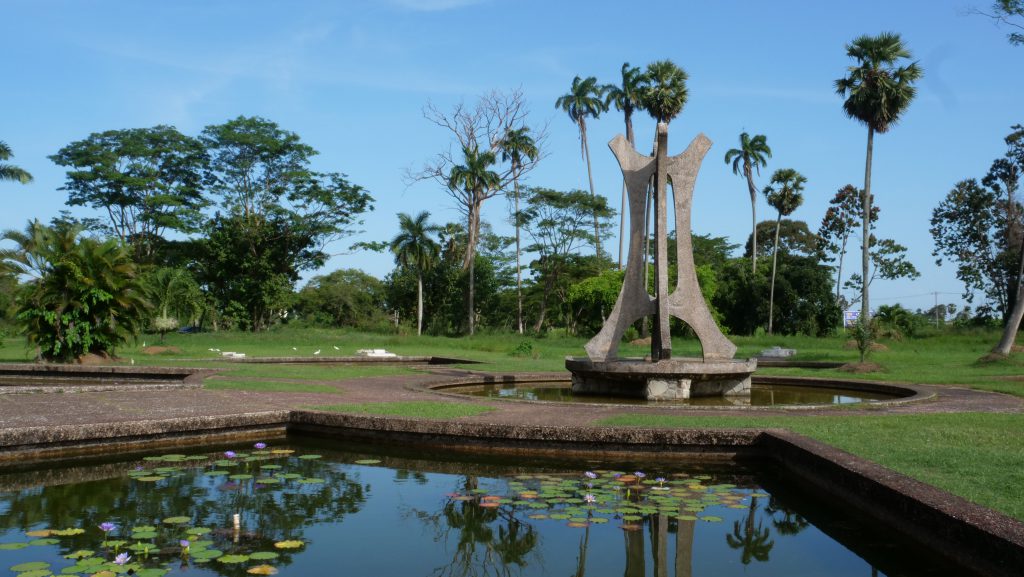
The gardens date from 1878 and the grounds are beautifully laid out with hundreds of tropical flowers, palms, trees, lily ponds, canals, bridges, statues, and a bandstand. We went straight to the Burnham Mausoleum where former Prime Minister and first Executive President Linden Burnham is buried.
The mausoleum, as you might expect, is quite imposing.
When viewed from above the shape is like a crucifix. The structure has granite floors and the four sides of the tomb itself are decorated with glass briquettes, while the base is elegantly crafted from greenheart. It’s a peaceful and serene place of rest for one of Guyana’s most influential political leaders.
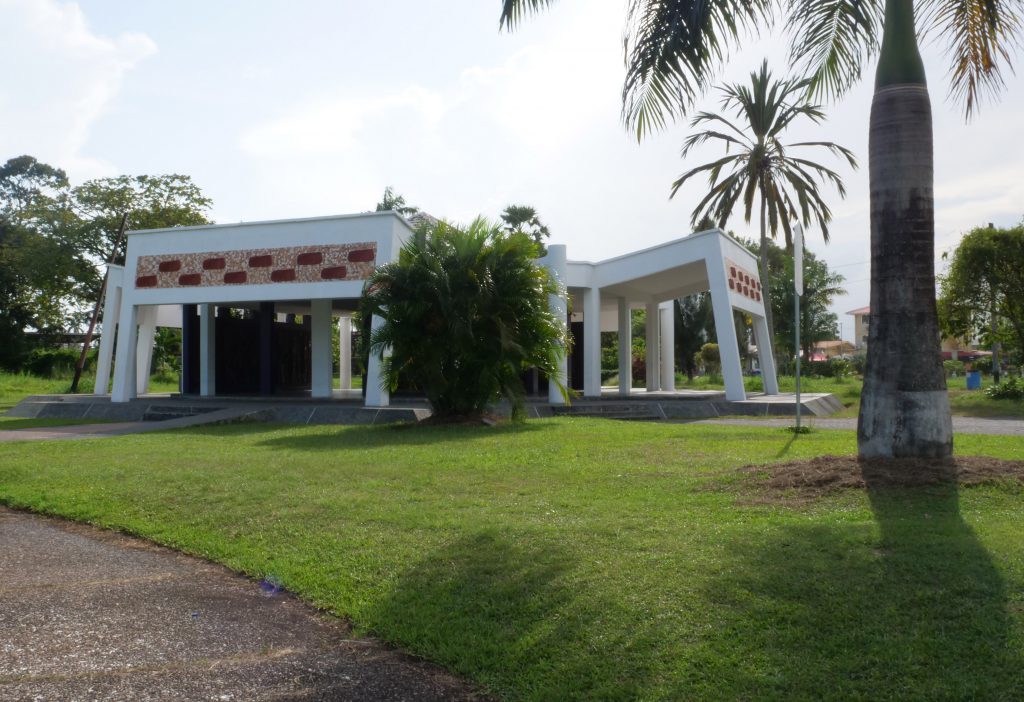
We rushed back to the hotel to get ready for dinner at the Secret Garden with Guyana’s famous ‘Singing Chef’; although I had never heard of him, so didn’t really know what to expect.
‘The Singing Chef’ is Eon John. Eon was born in Guyana, grew up in the US, and trained in kitchens in France and has led an extremely colourful and exciting life performing music and cooking throughout Europe and the UK.
Eon and his British wife Jessica are a fun and interesting couple who welcome tourists to their quirky, backyard restaurant where Eon prepares fusion dishes made from fresh local produce on the spot, while Jessica pours the drinks.
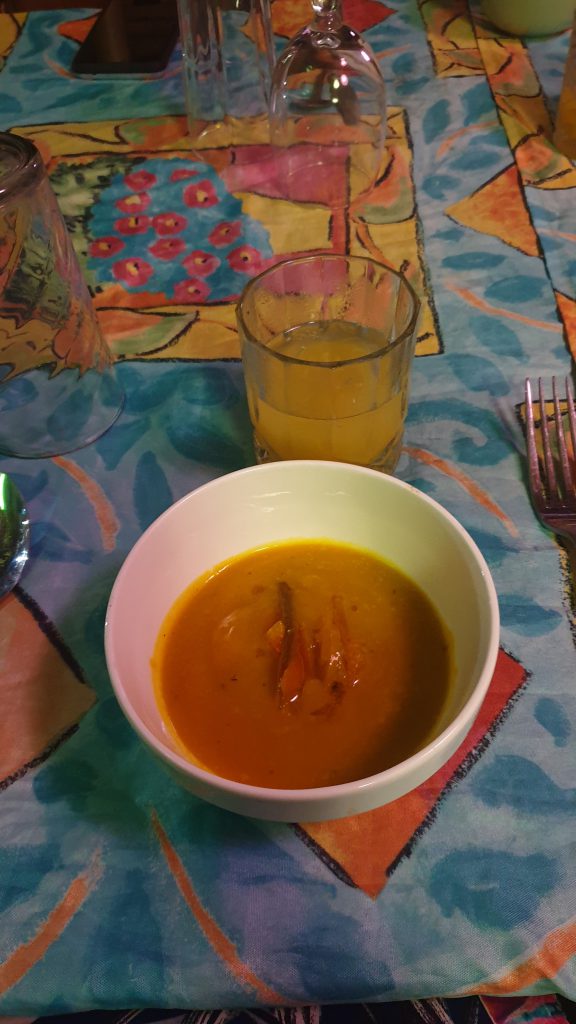
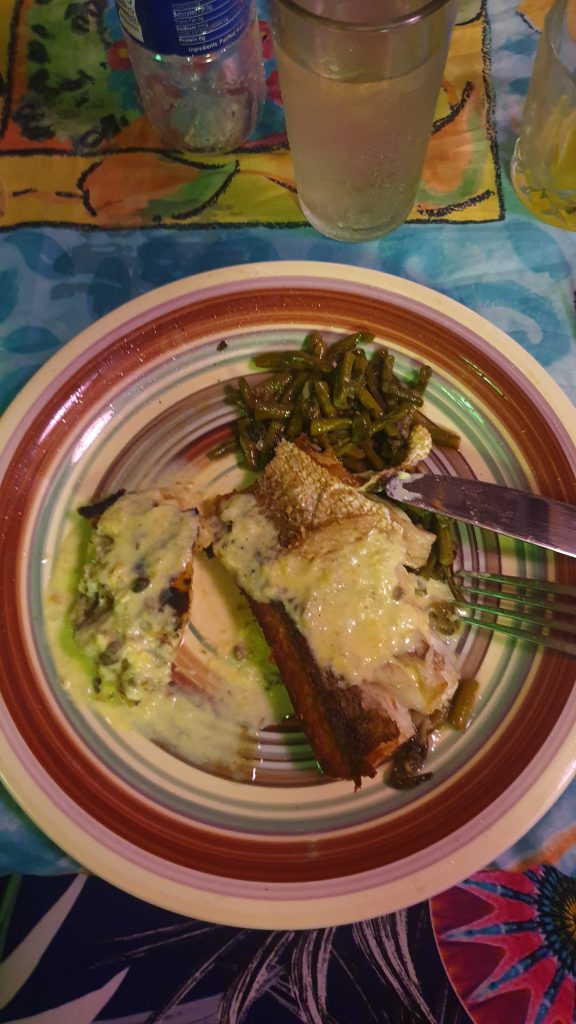
We were served five sumptuous courses (although I could only eat four because of a dairy intolerance) and everything was tasty, filling, and moreish.
At the end of the evening, Eon took out his guitar and sang a few simple songs that he had penned. One of them was about how annoying mosquitoes are and we could certainly all relate.
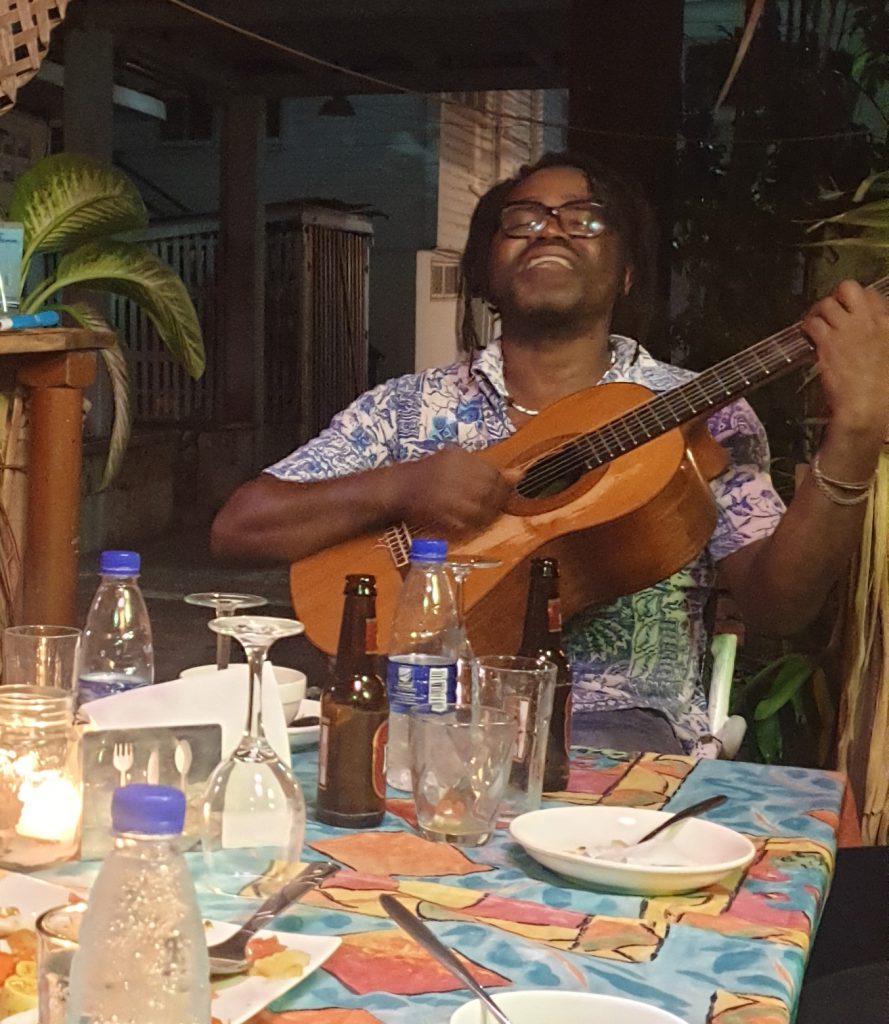
Eon is a likeable character and sitting in his garden while he provides the entertainment certainly makes you feel like old friends rather than guests.
I soaked up the genial atmosphere and thought about the last day of our tour when I would finally get to experience the awesome Kaieteur Falls!
Click to read: Discovering Guyana (Part 3) – Experiencing One of the World’s Highest Waterfalls.








